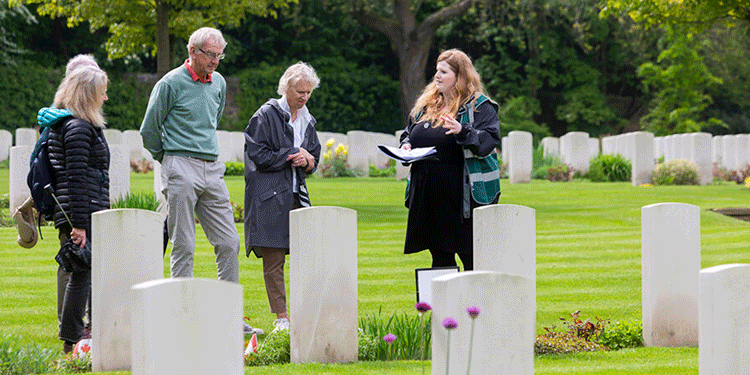
George was born in Burton Latimer on November 29th, 1896. He was the eldest of 5 children born to George John Worley and his wife Bertha Worley (nee George). The couple were both from Moulton and had married there on August 3rd, 1896.
In 1901 the family were living in Meeting Lane. George (Snr), 26, was a Baker Journeyman, Bertha was 25. Their children were George (Jnr), 4, Ethel May, 2 and Joseph Thomas, 10 months. Also listed in the household were Alfred Worley, 8, a brother of George (Snr) and Avery Panther, 49, a Boot Maker from Finedon. Another son, Ernest Oliver, was born on May 16th, 1902. Bertha died on April 25th 1904 just 7 days after giving birth to a daughter also christened Bertha. Bertha junior died on August 18th 1904. Later that year George (Snr) married Maud Mary Barlow.
By 1911 they had moved to Duke Street. George (Snr), 36, was a Bread Baker, Maud was 27. George (Jnr), 14, was working on a Press in the Coles Boot Factory; Ethel, 12, Joseph, 10 and Oliver, 8 were all at School. Also listed were Bertha’s brother, George William George, 23, a Packer in a Boot Factory, and 2 nieces Ada E Malone, 20, a Machinist in a Closing Room and Norah Malone 4.
George (Jnr) attested under the Derby Scheme on December 10th, 1915. (Men who attested under the Derby Scheme who were accepted for service and chose to defer it were classified as being in Class “A”. Those who agreed to immediate service were Class “B”. The Class “A” men were paid a day’s army pay for the day they attested; were given a grey armband with a red crown as a sign that they had so volunteered; were officially transferred into Section B Army Reserve; and were sent back home to their homes and jobs until they were called up).
George was Class “B” and was mobilised on January 21st, 1916 joining the 3rd Battalion Suffolk Regiment as a Private. After training he was transferred to the 24th County of London Battalion (The Queens) as Private No. 722909.
On June 15th he was sent to France and had only been there 3 months when he was reported missing at Mametz Wood. The Kettering Leader November 10th 1916 reported that ‘news has been received that Private George Edwin William Worley of the London Regiment (The Queens) has been killed in France. He had been reported missing since Sept. 15th and an enquiry by Mr Worley elicited this reply from 2nd Lt. Perry, “I deeply regret to tell you that your son was killed in action about the 20th (?) of last month. I had not the opportunity of knowing your son personally, but I have ascertained that he was shot through the head by an enemy sniper whilst carrying bombs up to the line; and that he had done very useful and valuable work. He is very well spoken of by all ranks who knew him and met his death, which was instantaneous, whilst carrying out his duty”.
Private Worley was the eldest son of George Worley and was 19 years of age’. His body was never recovered, and his name appears on the Thiepval Memorial which commemorates more than 72,000 men of British and South African forces who died in the Somme sector before 20th March 1918 and have no known grave, the majority of whom died during the Somme offensive of 1916. He was awarded the British War and Victory Medals.
At the dedication of the War Memorial in 1922 a wreath was laid in his memory from ‘Mum, Dad, Brothers and Sisters and G. & M., J.E. & C’. His name was also included on a wreath from the Coles Boot Company.

